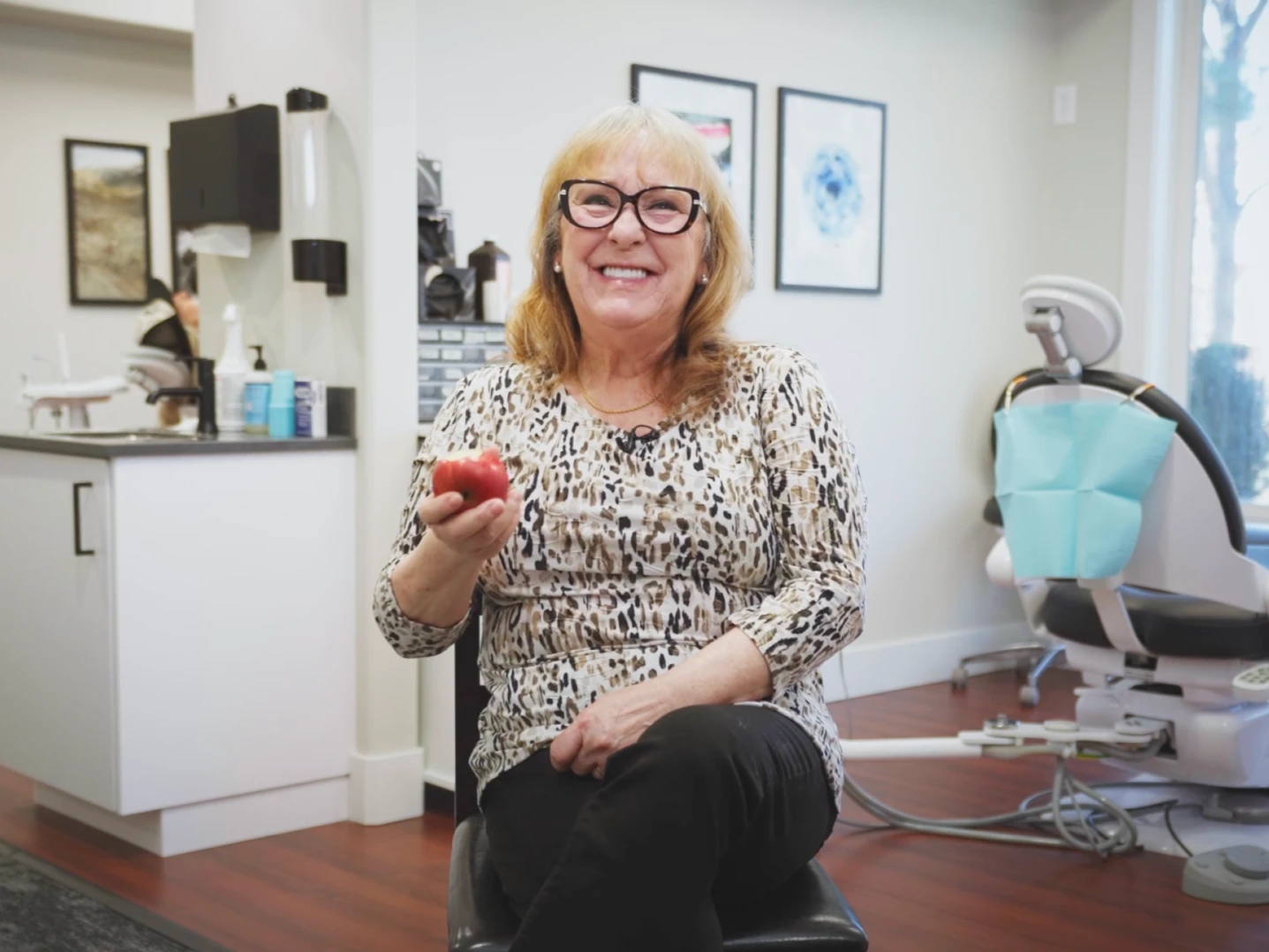Eating After Implant Surgery: Why Chewing Feels Different & How to Adapt
Getting full arch dental implants is a life-changing decision that restores your smile and function. However, many patients are surprised to find that chewing feels different afterward. In the video above, Dr. Caleb Stott addresses a common question he found on an online implant forum: “How did you get used to chewing without feeling?” This honest question highlights a crucial aspect of the implant journey that isn’t always emphasized.
This article will explore why chewing feels different with dental implants, what you can expect during the adjustment period, and how to adapt your eating after implant surgery. We’ll also cover what to eat after dental implant surgery to make the transition as smooth as possible.
Why Does Chewing Feel Different With Full Arch Dental Implants?
The primary reason for the change in sensation is the absence of the periodontal ligament (PDL). Your natural teeth are not fused directly to your jawbone. Instead, they are connected by the PDL, a thin layer of tissue full of nerve endings that acts like a set of tiny springs on a trampoline. This ligament provides crucial sensory feedback, allowing you to feel pressure, biting force, and subtle changes when you chew.
What Do Dental Implants Feel Like?
When you get full arch dental implants, whether an all-on-4 or all-on-6 system, the process is different. The titanium implants are placed into the jawbone, where they fuse directly with the bone in a process called osseointegration. This remarkable biological process creates a rigid, unmoving connection between the implant and your jaw, which is what gives implant-supported teeth their incredible strength. However, this direct fusion means there is no longer a periodontal ligament. Without the PDL, the rich sensory feedback you once had is significantly reduced or “muted.” You’ll still feel some pressure, but the sensitivity and detailed feedback loop are gone. This is why many patients feel like they are “walking on the moon” at first, as Dr. Stott described it in the video.
Tips for Eating After Implant Surgery: How to Adapt and What to Eat
The good news is that your brain and muscles are incredibly adaptable. While the initial experience can be strange, you will adjust over time. Most patients find their new normal within a few weeks to a couple of months as the healing progresses. Here are four key strategies our team at Smile Now Dentures and Implants recommends to help you adapt.
- Give It Time:
Patience is the most important factor. Allow your body and brain time to get used to the new sensations. As healing improves, your confidence and ability to chew will grow. - Start Slow with Soft Foods:
Ease your way into more complex textures. Starting with soft foods lets you practice chewing without worrying about excessive pressure or discomfort while your gums and jaw are healing. Think of items like smoothies, yogurt, mashed potatoes, scrambled eggs, and well-cooked pasta. These foods require minimal chewing force, allowing you to build confidence and let the surgical sites heal properly. This helps you figure out what to eat after dental implant surgery in the early stages. - Practice Mindful Chewing:
Because the direct feedback is reduced, you need to be more conscious of your actions. Slow down, take smaller bites, and pay close attention to how your bite feels. This helps your body and jaw muscles learn and recalibrate. - Ask for a Bite Adjustment:
If you feel like one tooth or area is hitting harder than others, don’t hesitate to contact your dentist. We have tools to measure your biting force and identify high spots. A simple adjustment can balance your bite, making it much more comfortable as you learn to function with your new teeth.
What to Expect Long-Term: A Reliable and Secure Smile
Here is the encouraging part: you will adjust, and you will be able to enjoy your favorite foods again. The initial strangeness gives way to a new kind of confidence. This is especially true for patients who were long-term denture wearers or had severely compromised teeth. For them, the stability of full arch dental implants is a massive improvement in quality of life. This is more than just a dental treatment; it’s a restoration of daily experiences that may have been lost due to dental issues—like enjoying a meal with family without worry, or smiling freely in photos.
So, what can you eat after dental implant surgery once you’ve fully healed? The answer is just about anything. Our patients go on to eat steak, nuts, raw vegetables, and bite right into apples and carrots. While the sensation will never be exactly the same as it was with natural teeth and an intact PDL, you will feel confident and secure. Think of it this way:
- It’s Not the Same, But It’s Reliable: You can count on your implants to stay in place.
- It’s Not Natural, But It’s Secure: No more slipping, clicking, or adhesives.
- It Takes Practice, But It Works: You can regain the ability to eat the foods you love without embarrassment or fear.

Start Your Journey with Confidence at Smile Now
If you’re feeling frustrated or unprepared for how different chewing feels after your procedure, you are not alone. More importantly, you are not stuck. At Smile Now Dentures & Implants, we believe in partnering with you through every step of your journey. Our open-door policy means we are always here to listen, make adjustments, and provide the support you need.
If you are considering full arch dental implants or are currently healing and have questions, we invite you to schedule a free consultation at one of our Smile Now offices. We will answer all your questions and ensure you are fully prepared to make the right decision for your long-term health and happiness.

